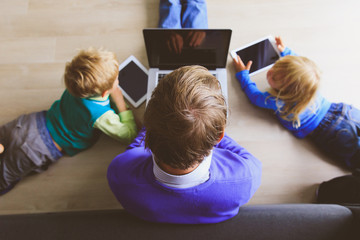The Impact of Media Violence on Children: Creating a Safer Digital Environment
Recent research has shed light on the harmful effects of media violence on children and adolescents. Exposure to violent content has been linked to various physical and mental health problems, including aggressive behavior, bullying, fear, depression, nightmares, and sleep disturbances. It is essential for childcare and healthcare providers to advocate for a safer media environment that prioritizes the well-being of children. This blog post aims to explore the detrimental effects of media violence, highlight the influence it has on behavior, and discuss the importance of promoting responsible media usage and parental involvement.
The Detrimental Effects of Media Violence:
Numerous studies have consistently shown that exposure to violent behavior in movies, TV shows, and video games can have severe consequences for children’s well-being. Children who witness violence on screen are more likely to exhibit aggression, become victims of bullying, and experience negative emotions such as fear, depression, nightmares, and disrupted sleep. These negative experiences can have long-lasting effects on a child’s mental and physical health.
The Influence of Violent Media on Behavior:
Experiments conducted with children and youth have demonstrated a clear link between exposure to violent media and increased aggression. Children who engage with violent films or video games tend to display more immediate aggression compared to those exposed to nonviolent media. This exposure can lead to the development of an irrational fear that the world is against them, perpetuating a cycle of violence and negatively impacting a child’s overall well-being.
Promoting a Safer Media Environment:
Childcare and healthcare providers play a crucial role in advocating for a safer media environment for children. Encouraging media literacy among caregivers and children is essential. By fostering critical thinking and thoughtful media consumption, individuals can develop the skills necessary to differentiate between appropriate and harmful content. Open discussions about media violence and teaching children how to make responsible choices regarding their media consumption are key components of promoting a safer digital environment.
The Role of Parents:
Parents have a significant responsibility in shaping their children’s media usage. Recognizing the importance of technology in our lives, parents should strive to make it a healthy part of their children’s childhood. This involves setting limits on screen time, monitoring the content children consume, and engaging in conversations about media violence. By modeling responsible media usage and fostering open dialogue, parents can help their children navigate the digital world safely and in a manner that promotes their well-being.
The impact of media violence on children cannot be ignored.
It is crucial to recognize the negative physical and mental health consequences that arise from exposure to violent content. Childcare and healthcare providers, along with parents, must work together to create a safer media environment for children. By promoting media literacy, encouraging responsible media usage, and actively engaging in their children’s media experiences, we can ensure that technology becomes a positive and enriching aspect of their lives. Let us prioritize the well-being of our children in the digital age by fostering a safer and more mindful approach to media consumption.

Leave a Reply